HISTORY
Tragedy at Sea
The sinking of the USAT Dorchester on February 3, 1943, was a tragic event during World War II, caused by a German torpedo attack.
It was the evening of Feb. 2, 1943, and the U.S.A.T. Dorchester was crowded to capacity, carrying 902 service men, merchant seamen and civilian workers. Once a luxury coastal liner, the 5,649-ton vessel had been converted into an Army transport ship. The Dorchester, one of three ships in the SG-19 convoy, was moving steadily across the icy waters from Newfoundland toward an American base in Greenland. SG-19 was escorted by Coast Guard Cutters Tampa, Escanaba and Comanche. Continue reading below for the full story.

Who were The Four Chaplains?
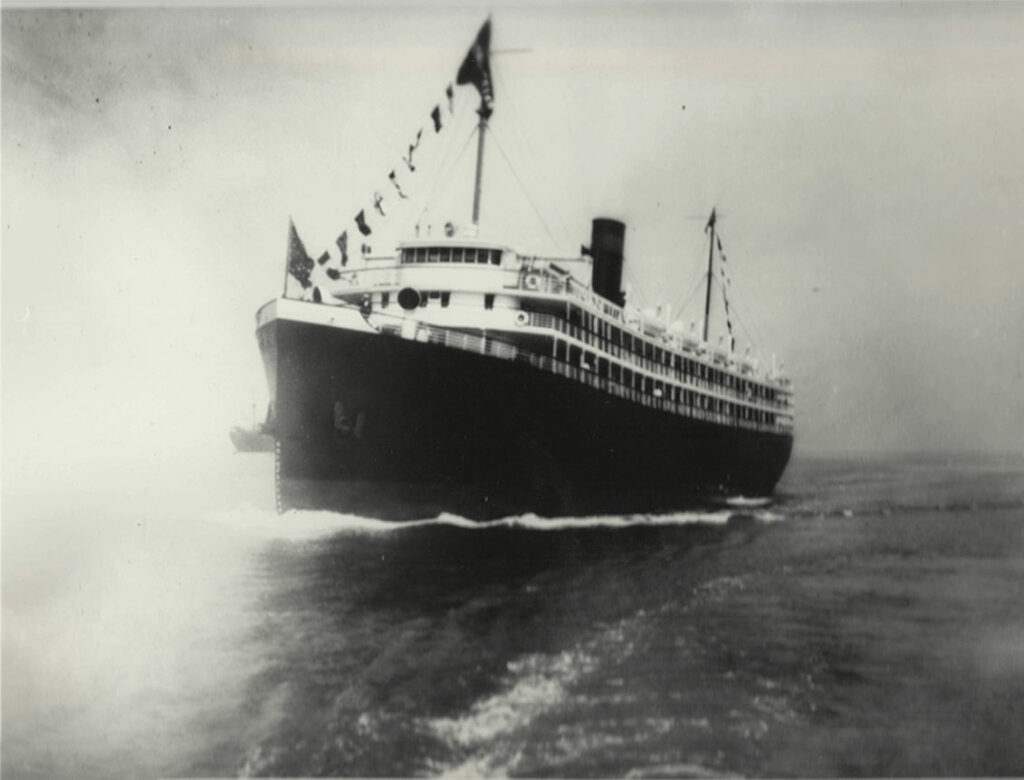
Hans J. Danielsen, the ship’s captain, was concerned and cautious. Earlier the Tampa had detected a submarine with its sonar. Danielsen knew he was in dangerous waters even before he got the alarming information. German U-boats were constantly prowling these vital sea lanes, and several ships had already been blasted and sunk. The Dorchester was now only 150 miles from its destination, but the captain ordered the men to sleep in their clothing and keep life jackets on. Many soldiers sleeping deep in the ship’s hold disregarded the order because of the engine’s heat. Others ignored it because the life jackets were uncomfortable
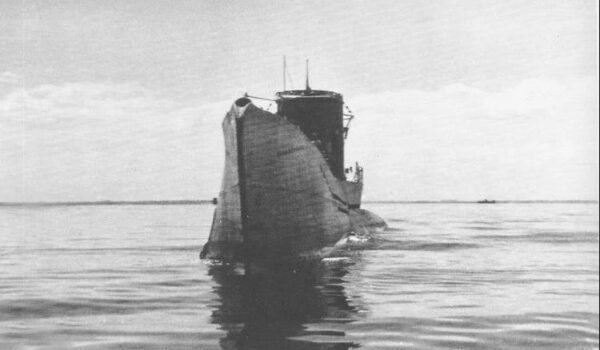
On Feb. 3, at 12:55 a.m., a periscope broke the chilly Atlantic waters. Through the cross hairs, an officer aboard the German submarine U-223 spotted the Dorchester.
The U-223 approached the convoy on the surface, and after identifying and targeting the ship, he gave orders to fire the torpedoes, a fan of three were fired. The one that hit was decisive–and deadly–striking the starboard side, amid ship, far below the water line. Captain Danielsen, alerted that the Dorchester was taking water rapidly and sinking, gave the order to abandon ship. In less than 20 minutes, the Dorchester would slip beneath the Atlantic’s icy waters.
Tragically, the hit had knocked out power Dorchester telegram and radio contact with the three escort ships.
The CGC Comanche, however, saw the flash of the explosion. It responded and then rescued 97 survivors. The CGC Escanaba circled the Dorchester, rescuing an additional 132 survivors. The third cutter, CGC Tampa, continued on, escorting the remaining two ships. Aboard the Dorchester, panic, and chaos had set in. The blast had killed scores of men, and many more were seriously wounded.
Others, stunned by the explosion were groping in the darkness. Those sleeping without clothing rushed topside where they were confronted first by a blast of icy Arctic air and then by the knowledge that death awaited. Men jumped from the ship into lifeboats, over-crowding them to the point of capsizing, according to eyewitnesses.
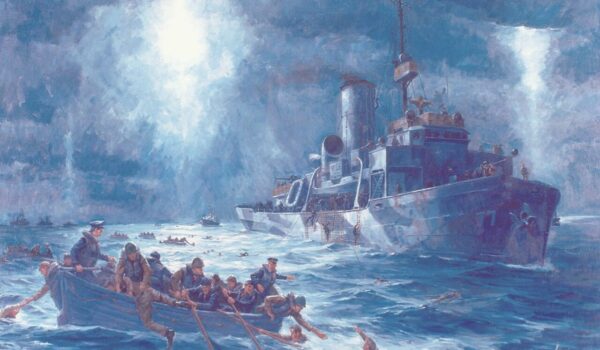

Through the pandemonium, according to those present, four Army chaplains brought hope in despair and light in darkness..
Those chaplains were:
- Lt. George L. Fox, Methodist
- Lt. Alexander D. Goode, Jewish
- Lt. John P. Washington, Roman Catholic
- Lt. Clark V. Poling, Dutch Reformed
Quickly and quietly, the four chaplains spread out among the soldiers. There they tried to calm the frightened, tend the wounded and guide the disoriented toward safety. “Witnesses of that terrible night remember hearing the four men offer prayers for the dying and encouragement for those who would live,” says Wyatt R. Fox, son of Reverend Fox.
“I could hear men crying, pleading, praying,” Bednar recalls. “I could also hear the chaplains preaching courage. Their voices were the only thing that keptme going.”
One witness, Private William B. Bednar, found himself floating in oil-smeared water surrounded by dead bodies and debris. “I could hear men crying, pleading, praying,” Bednar recalls. “I could also hear the chaplains preaching courage. Their voices were the only thing that keptme going.”
Another sailor, Petty Officer John J. Mahoney, tried to reenter his cabin but Rabbi Goode stopped him. Mahoney, concerned about the cold Arctic air, explained he had forgotten his gloves.
“Never mind,” Goode responded. “I have two pairs.” The rabbi then gave the petty officer his own gloves. In retrospect, Mahoney realized that Rabbi Goode was not conveniently carrying two pairs of gloves, and that the rabbi had decided not to leave the Dorchester.
By this time, most of the men were topside, and the chaplains opened a storage locker and began distributing life jackets. It was then that Engineer Grady Clark witnessed an astonishing sight.
When there were no more lifejackets in the storage room, the chaplains removed theirs and gave them to four frightened young men.
“It was the finest thing I have seen or hope to see this side of heaven,” said John Ladd, another survivor who saw the chaplains’ selfless act.
Ladd’s response is understandable. The altruistic action of the four chaplains constitutes one of the purest spiritual and ethical acts a person can make. When giving their life jackets, Rabbi Goode did not call out for a Jew; Father Washington did not call out for a Catholic; nor did the Reverends Fox and Poling call out for a Protestant. They simply gave their life jackets to the next man in line.
HEROES IMMORTAL
As the ship went down, survivors in nearby rafts could see the four chaplains–arms linked and braced against the slanting deck. Their voices could also be heard offering prayers.
Of the 902 men aboard the U.S.A.T. Dorchester, 672 died, leaving 230 survivors. When the news reached American shores, the nation was stunned by the magnitude of the tragedy and heroic conduct of the four chaplains.
“Valor is a gift,” Carl Sandburg once said. “Those having it never know for sure whether they have it until the test comes.” That night Reverend Fox, Rabbi Goode, Reverend Poling, and Father Washington passed life’s ultimate test. In doing so, they became an enduring example of extraordinary faith, courage, and selflessness.

The Four Chaplains
Lt. George L. Fox
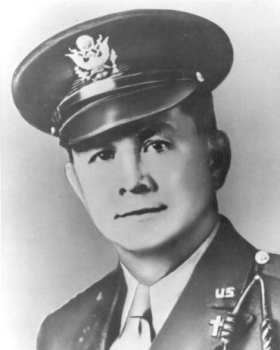
Methodist
Lewistown, Pennsylvania
History & Background
George L. Fox, the oldest of the four chaplains, knew all about war. Lying about his age in 1917, he enlisted in the Marine Corps as a medical corps assistant. He received a Silver Star for rescuing a wounded soldier from a battlefield filled with poison gas, the Croix de Guerre for outstand ing bravery in an artillery barrage and the Purple Heart for wounds.
A resident of Vermont, he was a successful accountant and family man when he heard God’s call to the ministry. Fox went back to school and later was ordained into the Methodist denomination. When war came, he once again enlisted, telling his wife, ” I’ ve got to go. I know from experience what our boys are about to face. They need me.” Fox began active duty on August 8, 1942, and served until that fateful morning of February 3,1943.
Service & Decorations
Active Duty
August 8, 1942
Assignment
411th Coast Artillery Battalion, 1942
Decorations
Purple Heart
Distinguished Service Cross
Medal of Heroism (posthumous)
Lt. John P. Washington
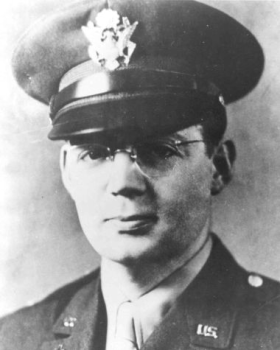
Roman Catholic
Newark, New Jersey
History & Background
John P. Washington grew up poor, scrappy and determined in the toughest section of Newark, N.J. One of nine children born to an Irish immigrant family, he was blessed with a sunny disposition, beautiful singing voice and love for music. He also loved a good fight and was leader of the South Twelfth Street gang when he was called to the priesthood. He played ball with the boys of the parish, organized sports teams and, when war came along, went with his boys” into the Army. He began active duty on May 9, 1942. His wonderful voice, raised in song and prayer to comfort those around him, could be heard until his final moments on February 3, 1943.
Service & Decorations
Active Duty
May 9, 1942
Assignment
76th Infantry Division
Decorations
Purple Heart
Distinguished Service Cross
Medal of Heroism (posthumous)
Lt. Clark V. Poling
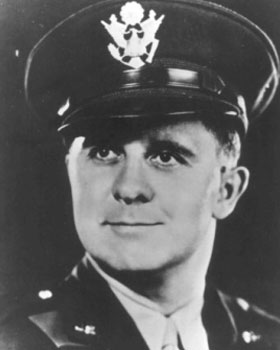
Reformed Church in Amercia
Columbus, Ohio
History & Background
Clark V. Poling was the youngest of the four chaplains and the seventh generation in his family to be ordained in the Dutch Reformed Church. When war came, he was anxious to go, but not as a chaplain. ” I’m not going to hide behind the church in some safe office out of the firing line,” he told his father. The elder Poling replied, ” Don’t you know that chaplains have the highest mortality rate of all? As a Chaplain, you’ll have the best chance in the world to be killed. You just can’t carry a gun to kill anyone yourself.” So Clark Poling left his pastorate in Schenectady, N .Y., and enlisted as a chaplain. Just before he left for active duty, Clark asked his father to pray for him — “not for my safe return, that wouldn’t be fair. I just pray that I shall do my duty … never be a coward … and have the strength, courage and understanding of men. Just pray that I shall be adequate.” Poling began active duty on June 10, 1942, and served until February 3, 1943.
Service & Decorations
Active Duty
June 25th, 1942
Assignment
131st QM Truck Regiment, 1942
Decorations
Purple Heart
Distinguished Service Cross
Medal of Heroism (posthumous)
Lt. Alexander D. Goode
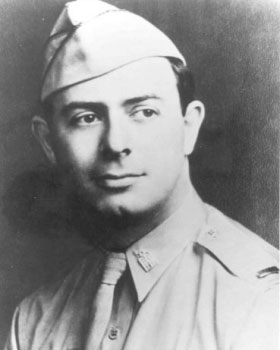
Jewish
Brooklyn, New York
History & Background
Alexander 0 . Goode was an outstanding athlete and scholar also known for his laughter and love of life. Following in his father ‘s footsteps, he became a rabbi While studying for his calling, he joined the National Guard and kept up an active membership. The return of the body of the Unknown Soldier at Arlington National Cemetery had a profound effect on Goode. He attended the ceremonies, choosing to walk the 30 miles rather than drive or take a bus, because he thought it showed more respect. Goode married his childhood sweetheart and was serving a synagogue in York, PA, when World War II broke out. He served on active duty from August 9, 1942, until February 3, 1943.
Service & Decorations
Active Duty
August 9, 1942
Assignment
333rd Air Base Squadron, 1942
Decorations
Purple Heart
Distinguished Service Cross
Medal of Heroism (posthumous)

